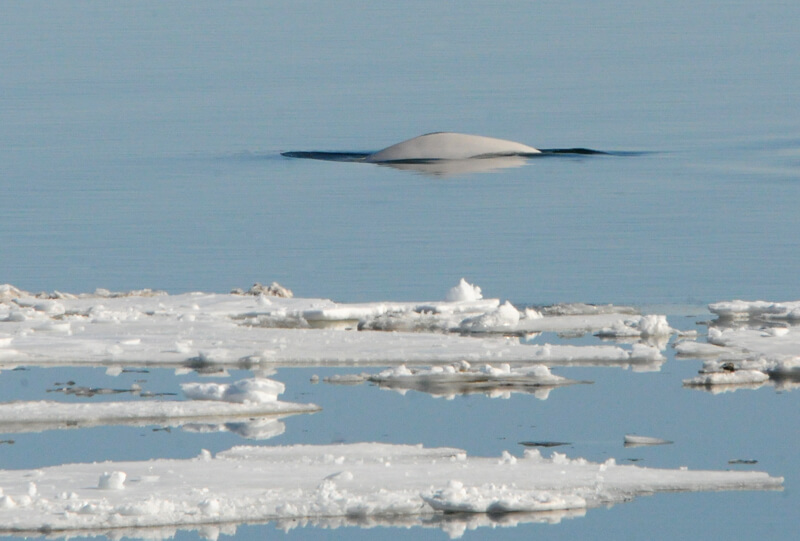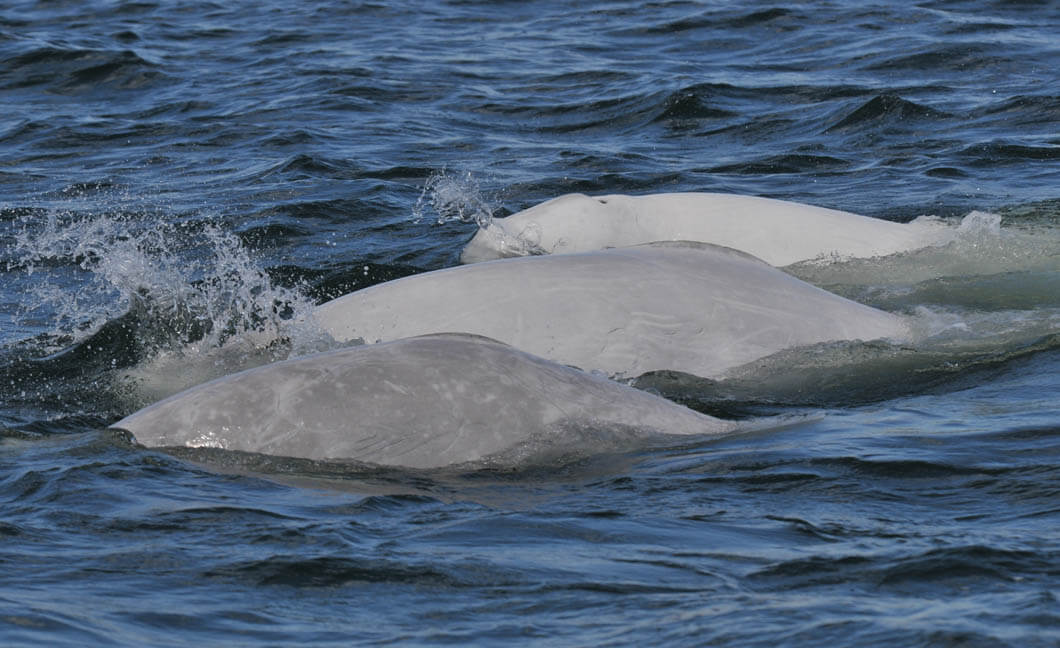When you’re passionate about whales, you really are. For the past fifteen years, Renaud Pintiaux has been a volunteer, employee, collaborator and employee once again for the Group for Research and Education on Marine Mammals (GREMM). Because he is not content to simply analyze beluga photos all week long, Renaud takes advantage of the weekend to get out and observe wildlife. On February 15, he travels to Cap de Bon-Désir and traverses the couple of kilometres between the road and the rocks to find himself face to face with the mighty St. Lawrence. Amidst the scattered chunks of ice, he spots his first white beluga, about 300 metres from shore. A few seconds later, a hundred metres from the first beluga appears another one, a young grey individual this time.
Belugas’ skin changes in colour over time. At birth, they are the colour of café au lait. Around one year of age, they turn dark grey, almost blue, which has earned them the nickname “bleuvet” amongst French speakers. Over time, the grey will gradually fade until the animal becomes completely white between 12 and 16 years old. Based on these colour changes, researchers can estimate a beluga’s approximate year of birth and better track its life history.
Unlike the humpback whales observed two weeks ago, it is not unusual to see belugas in winter. The St. Lawrence population resides here year-round. Aerial surveys show that the majority of the population winters farther downstream (closer to the Gulf) than in summer, when it frequents the Estuary and the Saguenay Fjord.
Usually found in the Arctic, this species is well adapted for winter conditions. Like other species found in the Arctic such as the narwhal or bowhead whale, the beluga lacks a dorsal fin. This fin allows whales to evacuate heat through a process known as thermoregulation. However, in cold waters, such a trait is more of a disadvantage than anything. Additionally, the dorsal crest is believed to make it easier for the animals to break through thin ice without injuring themselves when breathing on the surface.
Did you know that the beluga’s names comes from the Russian word for white, bielo? This colour is probably a very useful trait when living in the Arctic. Our St. Lawrence belugas are very lucky, as they have no predators. However, in the Arctic, they are hunted by polar bears. Their white colour likely helps them go unnoticed amongst the ice floes and thus avoid being preyed upon. For us as observers, this colour makes them particularly difficult to spot in winter.
Back to Cap de Bon-Désir… The belugas observed are not alone. Two harbour seals and 15 or so harp seals are also swimming in the ice-free waters. On February 18, Renaud would observe seals once again, this time directly from GREMM’s office on the second floor of the Marine Mammal Interpretation Centre in Tadoussac.
Still on the North Shore but farther downstream, between Port-Cartierand Sept-Îles, about twenty seals are observed offshore. The ice cover is now well established. If whales pass through the polynya (ice-free zone) in the middle of the St. Lawrence, they will be too far for local residents to be able to see.






